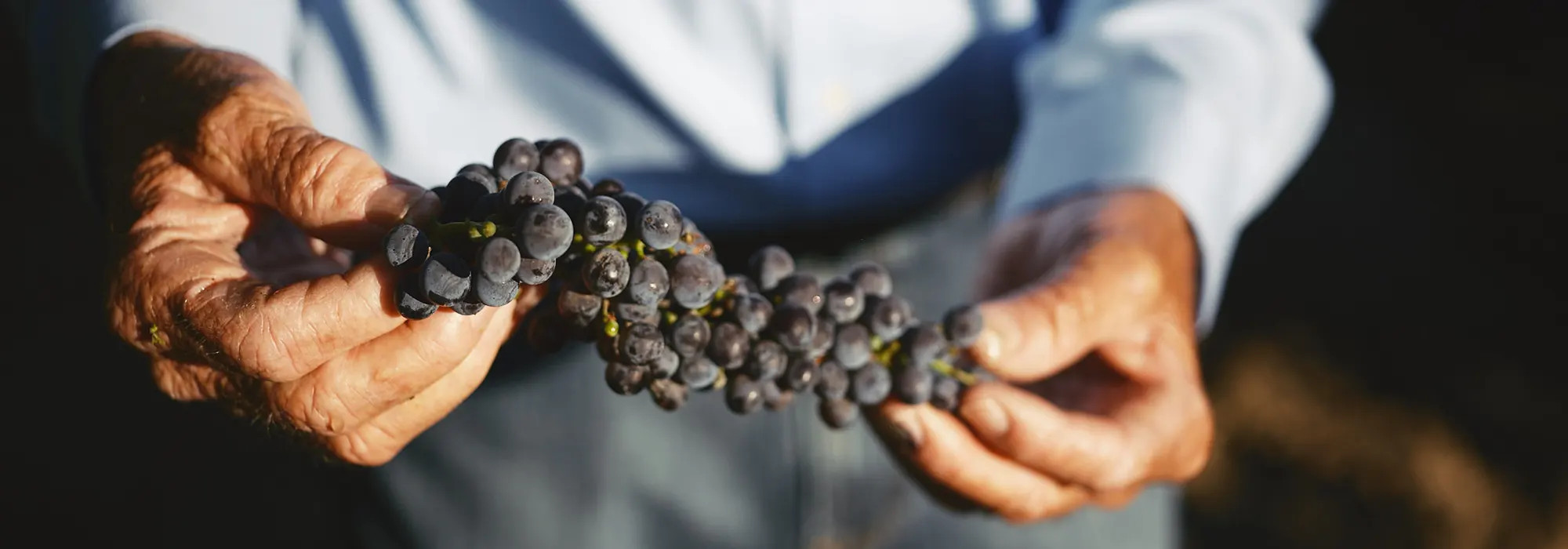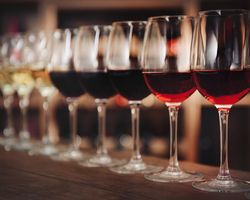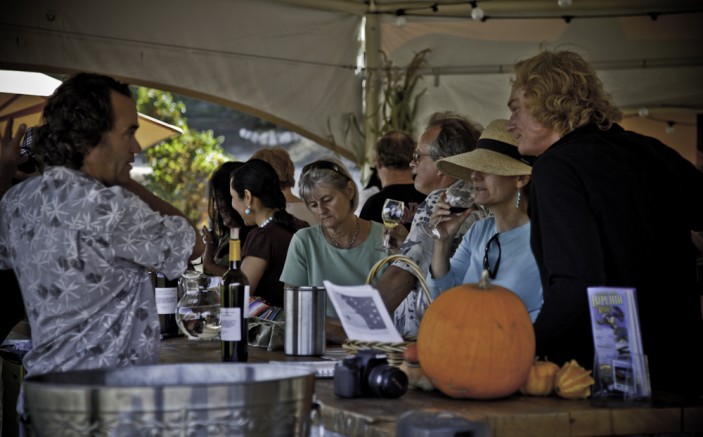Grilled Fish Tacos
You can use any kind of fish for these grilled tacos, or shrimp if you prefer. Pacific halibut is lean, with thick flakes, and easy to grill. Offer the salsa separately so lovers of spicy food can add as much as they like, and others can pass. Of course, pair with your favorite Temecula Valley Rosé or Sauvignon Blanc.

Serves 4
Ingredients:
- Scant ½ teaspoon whole cumin seed or ground cumin
- ¾ teaspoon sea salt
- Scant ½ teaspoon paprika
- 1 pound skinless Pacific halibut, preferably in 1 piece
- Olive oil
- 1 heart of romaine, dark green outer leaves removed
- 1/3 cup crema (Mexican-style sour cream) or sour cream
- Canned chipotle chile en adobo or chipotle hot sauce, optional
- 8 corn tortillas
- 16 cherry tomatoes
- 1 small avocado, halved, pitted, and sliced lengthwise
- Coarsely chopped cilantro
- Salsa verde, store-bought or homemade
Directions:
If using whole cumin seed, toast it in a small dry skillet over medium heat until it darkens and becomes fragrant. Let cool, then pound fine in a mortar or grind in a spice grinder. In a small bowl, combine the cumin, salt, and paprika. Brush the fish all over with olive oil, then season with the spice mix. Refrigerate on a plate for 30 minutes.
Prepare a hot charcoal fire or preheat a gas grill to high.
Cut the romaine in half lengthwise, then slice thinly crosswise. Set aside. Put the crema in a small bowl. Whisk in enough cold water to make it thin enough to drizzle. If desired, whisk in finely minced chipotle chile or hot sauce to taste.
Wrap the corn tortillas in aluminum foil or a clean kitchen towel. Bring an inch of water to a boil over high heat in the bottom of a steamer. Put the tortilla package in the steamer basket, cover, and steam for 1 minute. Then turn off the heat and let stand for 10 minutes.
In a small bowl, toss the cherry tomatoes with enough olive oil to coat them lightly. Season with salt. Put them on a small heatproof stainless grill tray or other heatproof baking dish and set on the grill directly over the flame. Cook until the tomatoes are sizzling and lightly charred, about 3 minutes. Set aside.
Place the halibut on the grill rack and grill without turning until the flesh just flakes, 8 to 10 minutes, depending on thickness. Transfer to a platter and divide the fish into 8 pieces of roughly equal size.
To assemble the tacos, put 2 hot tortillas on each of 4 plates. Top each tortilla with some of the shredded romaine, then with a piece of fish. Divide the tomatoes and avocado slices among the tacos. Drizzle crema over the fish, top with cilantro and put a lime wedges on each plate. Serve immediately, passing the salsa verde separately.
Suggested Pairings:
Briar Rose Winery ~ 2019 Rosé Fume
Frangipani Winery ~ 2019 Sauvignon Blanc
Mount Palomar Winery ~ 2017 Sangiovese Rosé
Vindemia Winery ~ 2018 Sauvignon Blanc
Recipe & photo courtesy of the Wine Institute of California



 Blended wines are some of our favorites because they are the most complex and interesting types of wine. Here are the 5 facts you need to know about blends:
Blended wines are some of our favorites because they are the most complex and interesting types of wine. Here are the 5 facts you need to know about blends: